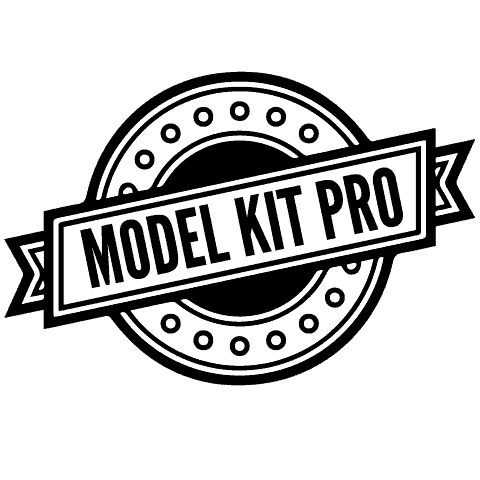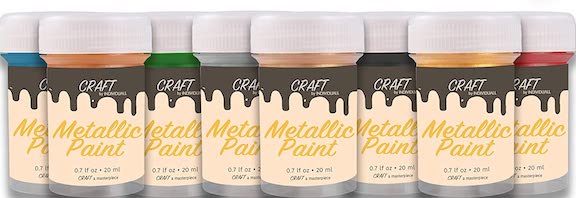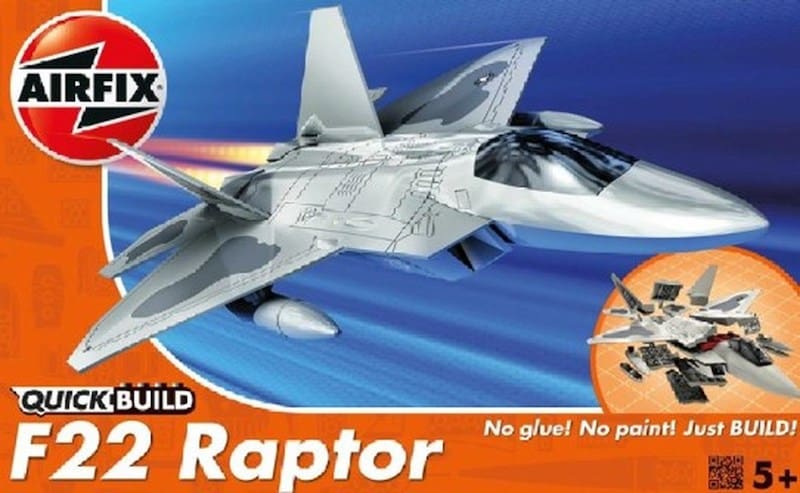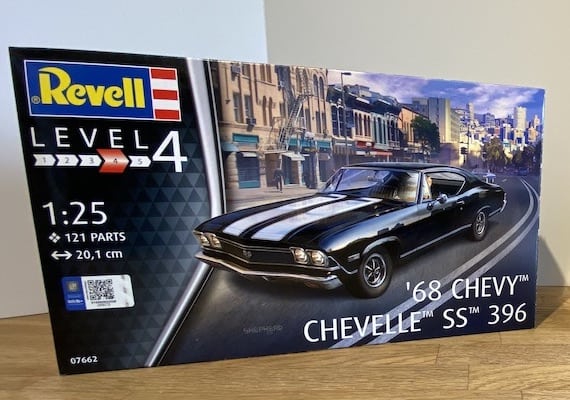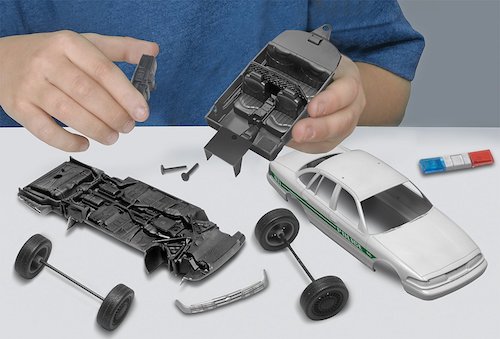
Model kits are built for people of all ages and abilities, so the industry makes kits in five different skill levels so everyone has a category where they are comfortable. This makes it so that a beginner can get the same enjoyment from building a model as someone who has been doing it for years.
What are the model kit skill levels and what do they mean? Model skill levels range from 1 to 5, with level 5 being the hardest and level 1 the easiest. Level 1 kits may have 10 to 30 pieces, Level 3 kits from 80 to 100, and Level 5 kits from 200 up to 1000 pieces or more. Level 1 is usually a snap together kit requiring no paint and all other levels require glue and painting.
If you’re not familiar with model kit ratings your first experience may not be as fun if you get in over your head. Modeling is a hobby that takes practice, patience, and time to get your desired result. We will delve into the different levels with some examples of kits to make it more enjoyable for you.
The ‘skill level’ is a useful indicator of difficulty rating to individuals who are new to the hobby and/or those who are buying a kit as a present for someone else.
Skill Level 1 Models: for Beginners
The first level is for young beginners or someone who hasn’t built models before. These models are already painted for you so that takes away a lot of the mess while you are learning.
The basic idea of these models is learning how things go together. With most of these, you just sort of snap the pieces into place.
These models teach the basics of how a car goes together with body parts and wheels. If you were anything like how I was when I began, you will learn how the engine, frame, and wheels all work together in a car.
Level 1 kits use the method of peeling the decals and placing them on, rather than the decals where you have to use water.
There are a few exceptions to this breakdown. Some model kits made by a company called Airfix do require glue and paint, so sometimes their level 1 is really more like a level 2.
Here are some good examples of Skill Level 1 kits:
Build and Play Jeep Wrangler. This very basic beginner kit features snap construction, (no screws or glue required) and rolling wheels. This Jeep would be a good model for a beginner to practice their painting skills on. It doesn’t require paint, but some chrome paint could be added to the bumpers along with other details for fun.
Great for someone’s first build, a gift for a younger child, or if you just like Jeeps.
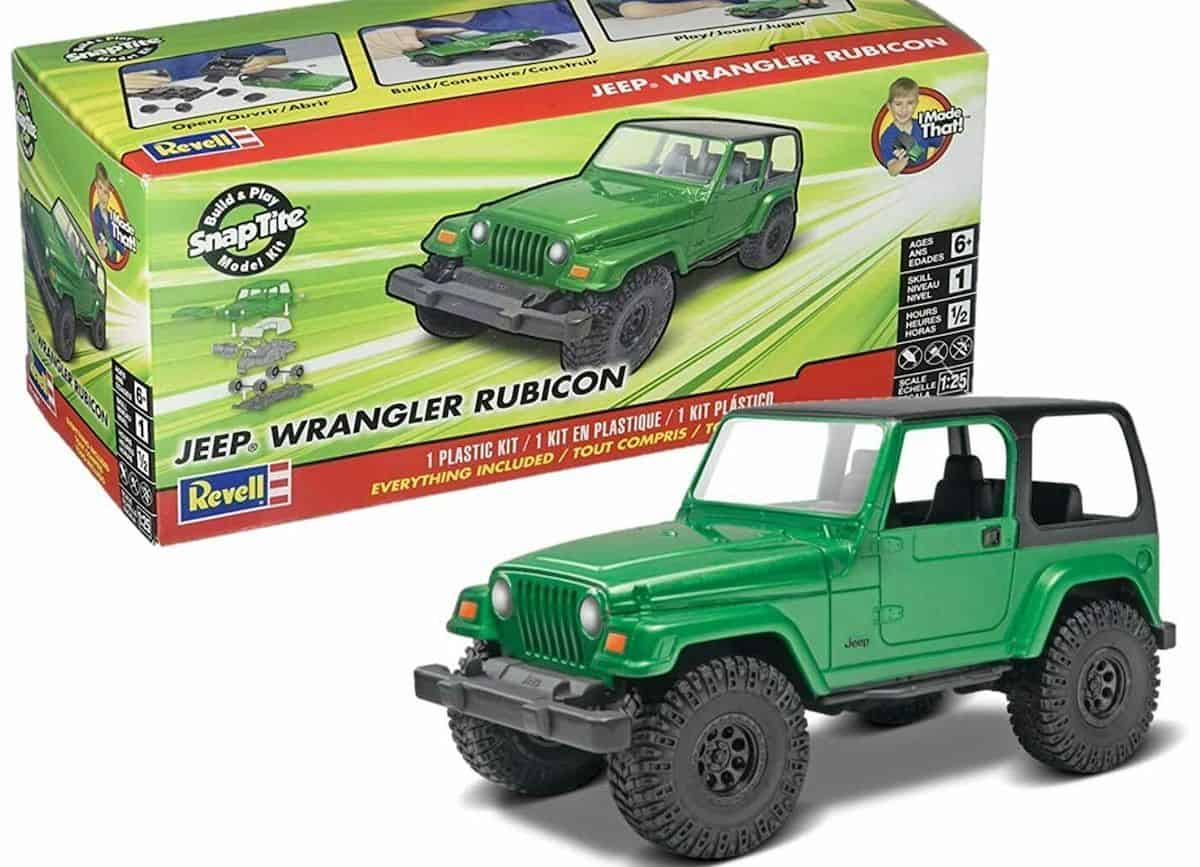
If you want to add a little paint, remember that acrylics are easier to clean up after, and enamels are more permanent and have a harder finish.
F22 Raptor Fighter from Airfix: The pre-colored pieces simply push together, without glue or paints, to build an impressive model which can then be decorated with the included self-adhesive decals.
This plane model comes with its own display stand to show off your handiwork. This is a fun build for teaching the basics in completing your first model.
Skill Level 2 Models: Glue and Paint
This level is different in a few ways as it is recommended for those over the age of ten. This level is where the fun really starts to begin. Most of these come in plain white pieces so you get to start painting. It makes it more interesting as you pick different color combinations or you can use the colors recommended in the instructions.
These usually contain up to 80 pieces so there is a lot more detail.
Also this is where you learn to follow instructions closely or you may be taking pieces apart to insert another piece.
This the level where glue will be needed so you should purchase a glue that is made for model making at a hobby shop.
There are also what are called water-slide decals, which are more life-like. They take practice and patience but can make your model really standout.
Here are some examples of skill level two kits:
This is a collection of four rare model kits. scale (1/25) AMT/ERTL: 1962 Ford Thunderbird (#31886), 1997 Chevrolet Corvette (#8327), 1957 Corvette Street machine (#31875). Revel Monogram VW Street Machine (Bug)
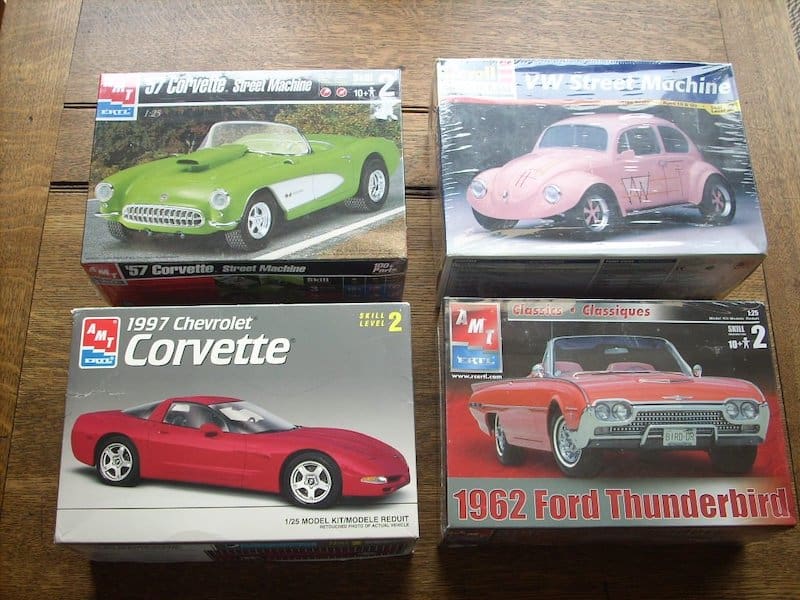
More info about applying decals in this post
Skill Level 3 Models: More Parts and Decals
Skill level three can be almost as hard as levels four and five. These will most certainly contain close to 100 parts. These models often contain more intricate decal schemes so you will want to be practiced up on your level two models.
If following the painting instructions becomes a little more difficult, you may need to mask some areas off to create color combos or very small parts require different colors.
There are many good examples of level 3 kits. Here are some really good ones.
The Revell F-22 Raptor Plastic Model Plane Kit allows you to build your own flying machine using 116 realistically modeled parts.
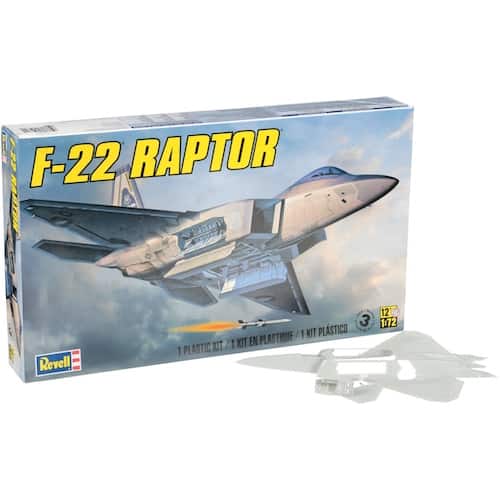
REVELL #85-1509: 1/25 Scale Auto Transport Trailer Plastic Model Kit: Something different and fun.
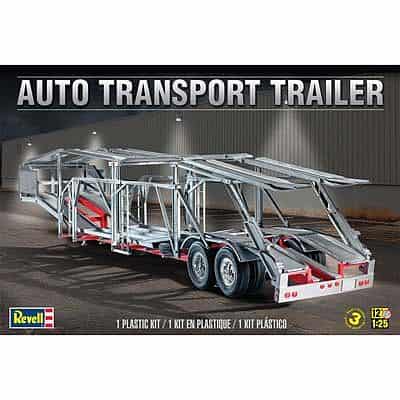
Skill Level 4 Models: The Next Steps
More parts, more smaller parts, more details and intricate fittings. This is the level where you begin tinkering with the engine and putting details on the inside as well. All of the levels have some sort of age limit. Yet, this is just what model makers think is appropriate to begin using the kit.
The higher the level you go, the more work you’ll be putting into it.
Okay now things start to get even more interesting. More parts, more smaller parts, more details and intricate fittings.
Each model kit level have some sort of age limit. This is just what model makers think is appropriate to begin using the kit. The manufacturer takes into account using the glue and paint, the skill involved in each level, and so on.
It gets down to how comfortable you feel with what you are doing. Some people get it really easily and move on really fast while others may want to stay on level two or three a little longer.
It really doesn’t matter, so find what level you feel you are ready to handle and when you are comfortable move on to the next level.
My favorite skill level fours that I have built: Revell RV07662 1:25-1968 Chevy Chevelle SS 396 Plastic Model kit, Black, 1/25
Revell 1:24 55 Ford F-100 Street Rod
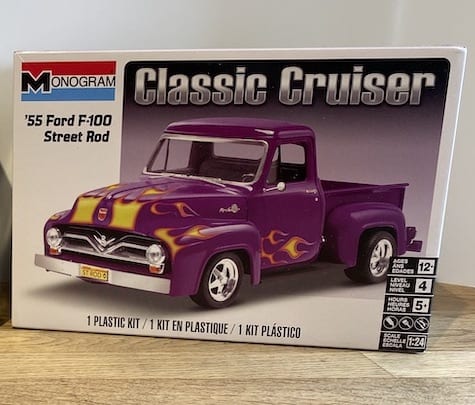
Skill Level 5 Models: For Experts
This level has super-detailed parts, can contain hundreds of pieces, or even over a thousand. They often have moving parts, like working suspension on cars and motorcycles, rotating propellers on planes, and movable turrets on tanks.These are reserved for expert modelers or for those ready for the next step.
These can take days to build and on some with hundreds of pieces it may take weeks or more.
These are often ships, planes and very detailed autos. Here are some that could be a real challenge. They can be quite expensive, sometimes $1000 or more, but result in a real collectors piece.
SOVEREIGN OF SEAS – 100 Gun First Rate Ship of the Line
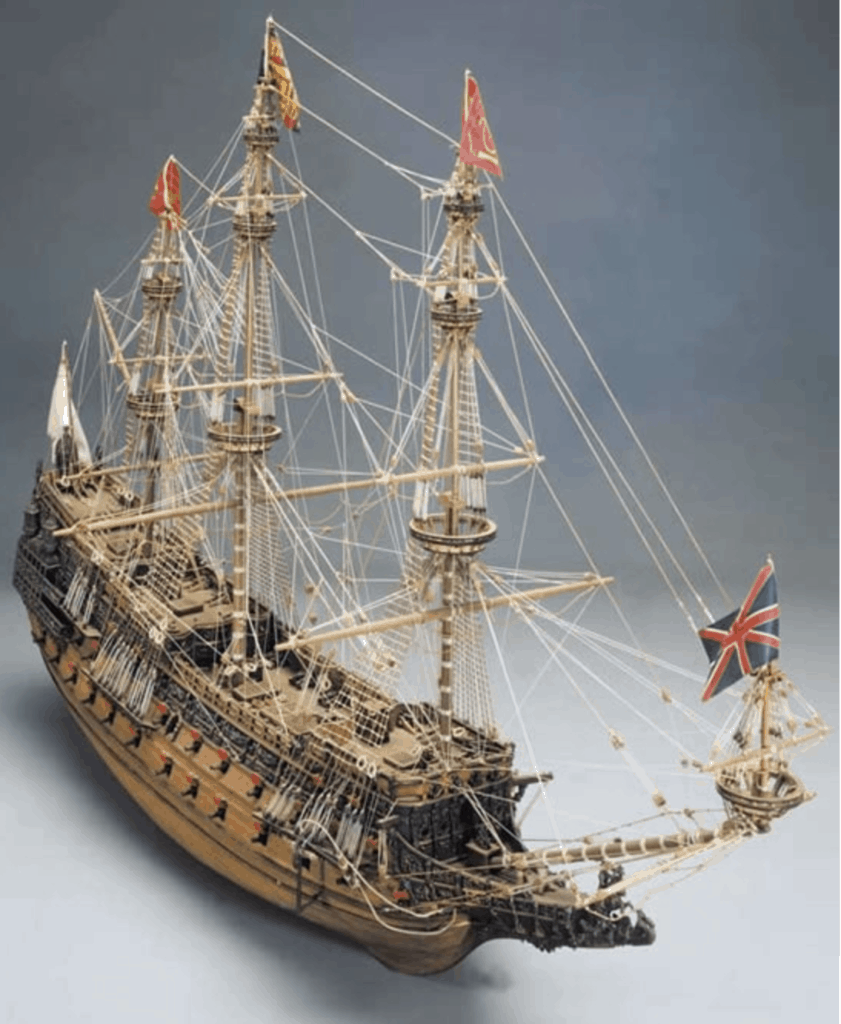
Revell 1/24 Ferrari 250 GTO # 07077 – Plastic Model Kit
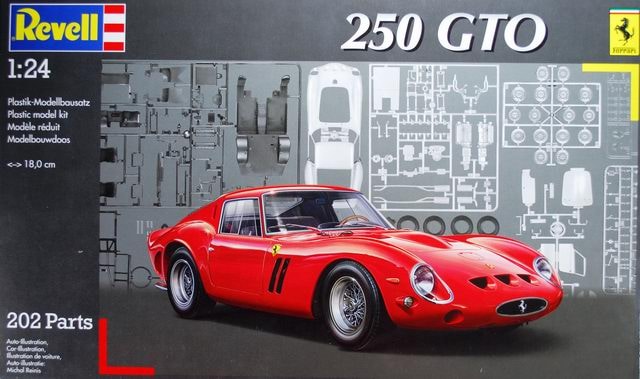
Choices, Choices, Choices:
Now you just have to decide what skill level you’re comfortable with or just buy a model and start building. You can always go back to a model you’ve started and finish it when your skills catch up. I can say that from experience. Happy Modeling!
Related Questions:
What are a few of the most interesting model airplane kits?
- Tamiya P-51D Mustang
- Revell Messerschmitt
- Miscy 3D Wooden
- Hasegawa F-22 Raptor
- Revell SR-71A Blackbird
What are Metal Earth models? Metal Earth models are made from high quality steel sheets. Each model features amazing detail with parts cut from one or more 4” square steel sheets. Easy to follow instructions are included with each kit with no soldering or glue required. Simply snip out the pieces and bend the tabs through corresponding connection points.
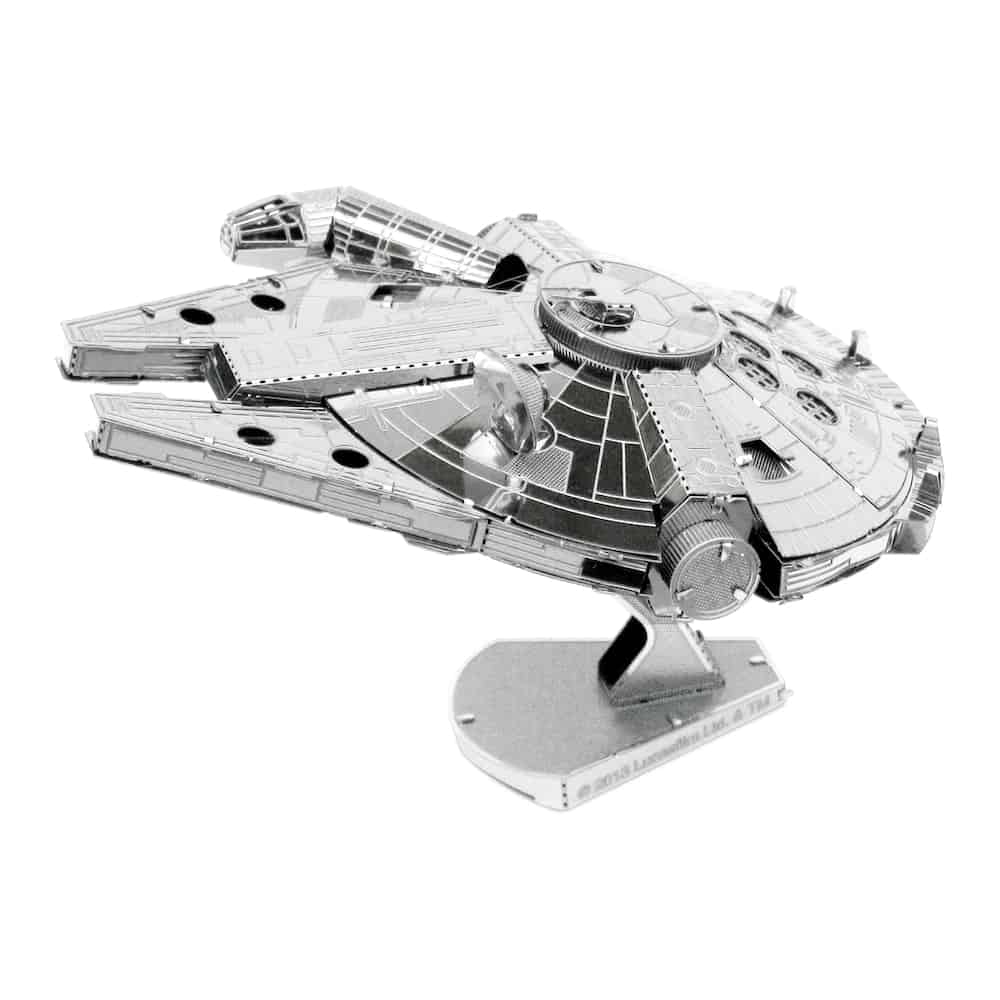
Can you paint Metal Earth models? Yes you can.
- Sand the metal sheets with a fine sandpaper.
- Apply a fine metal primer from a spray can.
- Paint all the metal parts while still on their sheets.
- Proceed to building from the pre-painted parts.
Some Of My Favorites
paint booth
airbrush kit
Vallejo Basic USA Colors Paint Set, 52$ amazon
